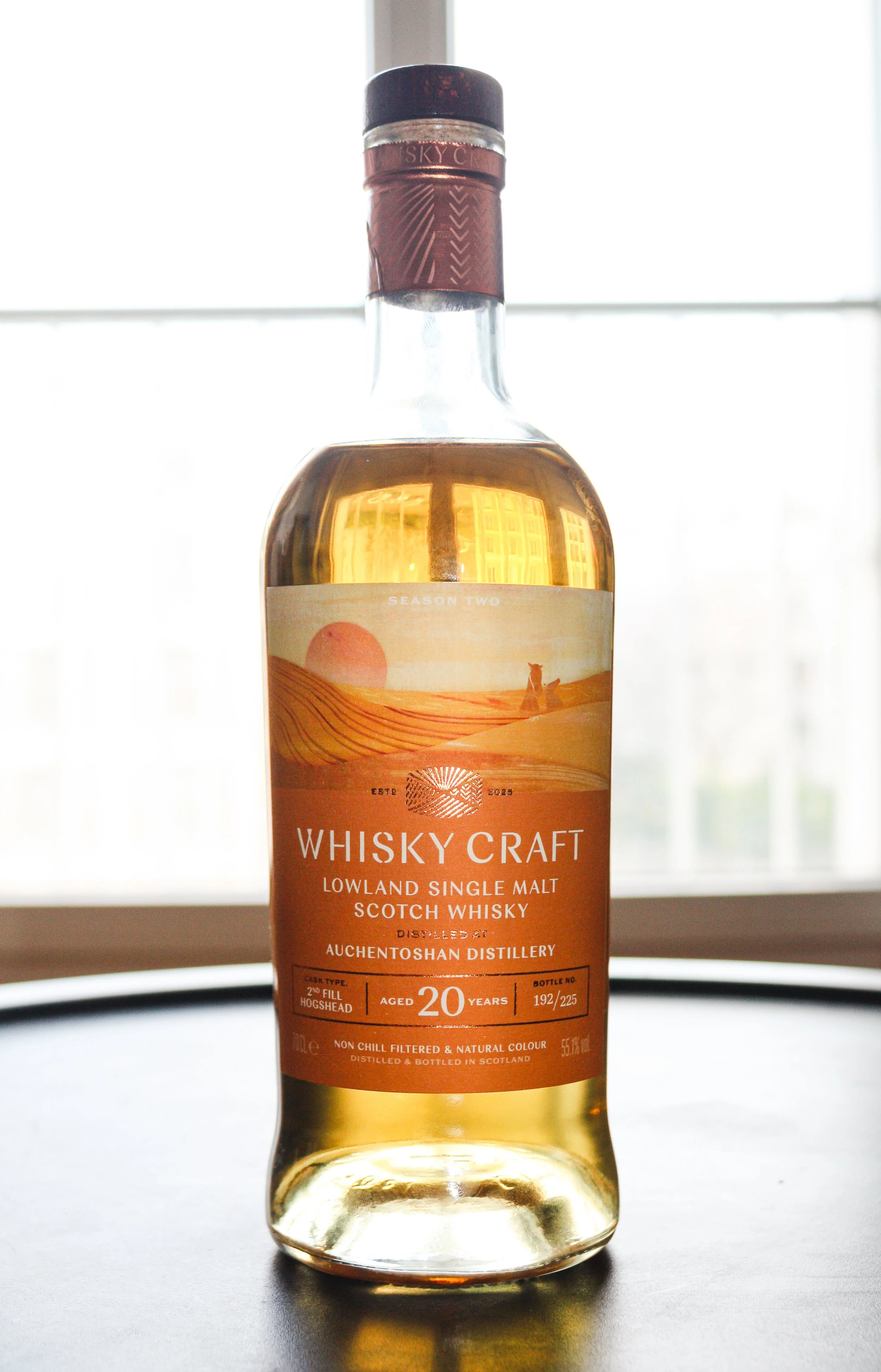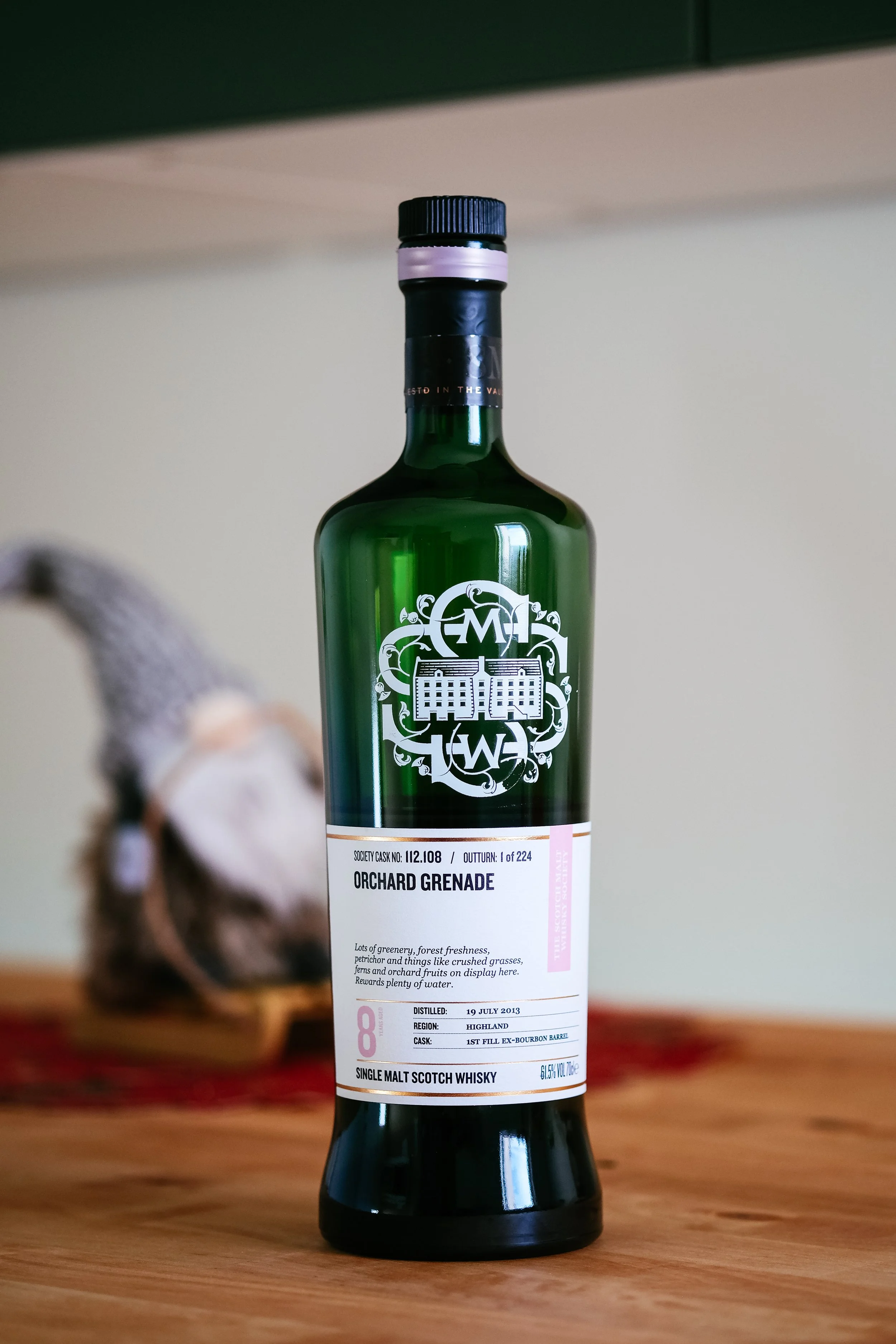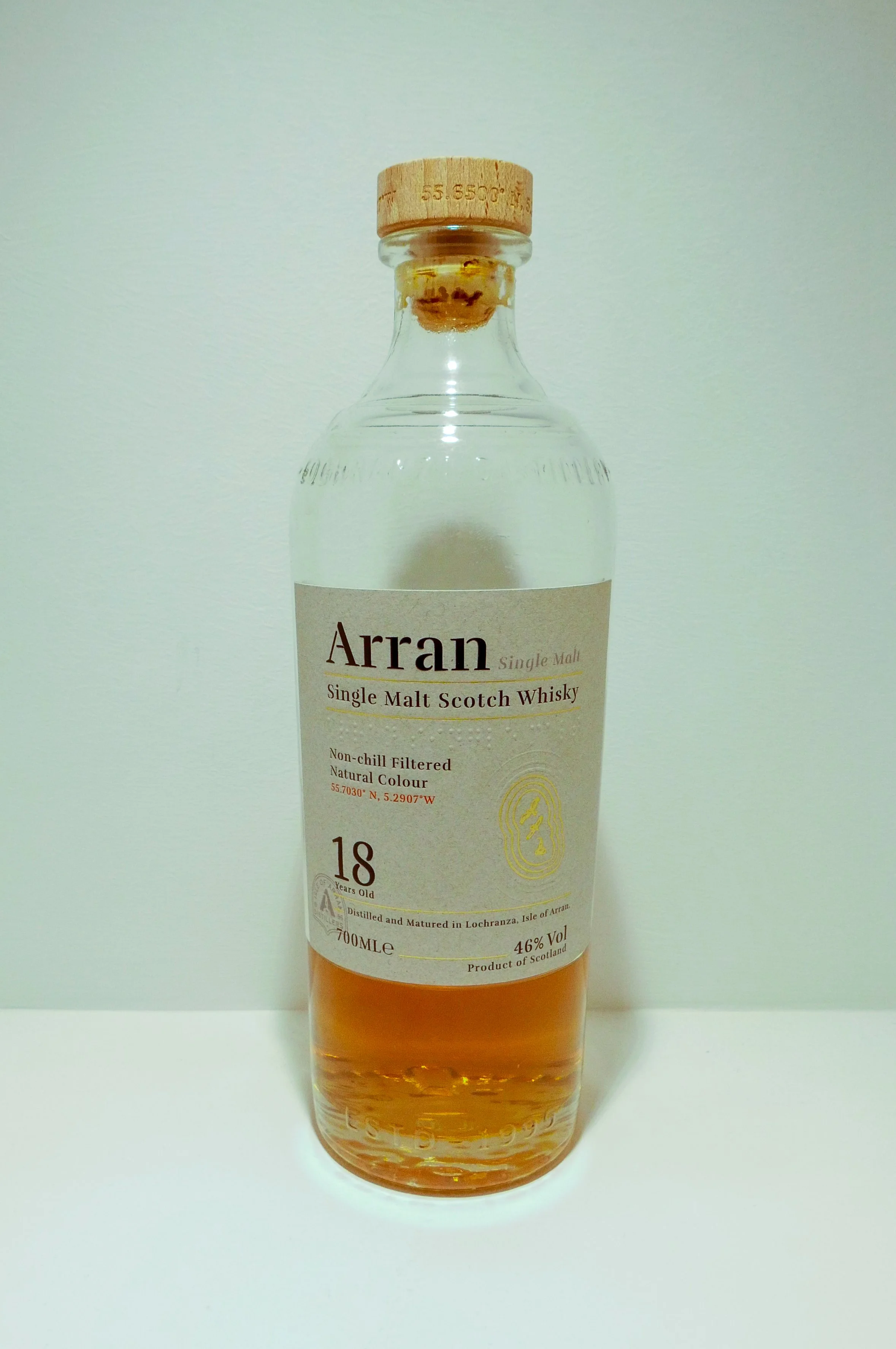Westport 15yo Good Spirits Co.
‘Teaspooned’ Glenmorangie | 50% ABV
Score: 7/10
Very Good Indeed.
TL;DR
As distracting and attention-demanding as your favourite scenic road
No fixed itinerary.
Some of the best adventures happen without a plan.
Over the past few years, I’ve had the privilege of taking a few campervan road trips across Scotland; setting out with nothing but a loose sense of direction and no fixed itinerary. No booked stops, just a mix of wild parking and the odd established site, deciding each day where the road would take me next. The freedom to simply go or not go - without constraints or schedules - has made for some truly unforgettable experiences.
There’s something about the unplanned nature of these road trips that turns every morning into a fresh roll of the dice. Will today bring coastal views or mountain excitement? Will a random lay-by serve as the perfect sunset viewpoint? Will a highland cow block your path with the unwavering stature of a border guard? Who knows. That’s half the thrill.
The absolute joy of deciding each morning where to move onto, whether to move on at all. On those trips I have enjoyed such great locations, from sunsets at Arisaig, views over the Summer Isles and to battering Atlantic storms at Durness, there are countless experiences to be had in Scotland. However, few of them are as dramatic as the journey to Applecross via the breathtaking Bealach na Bà - the pass of the cattle.
Bealach na Bà is a winding mountain pass of mythic proportions - a 12-mile ribbon of tarmac climbing over 2,000 feet from Loch Kishorn in tight, looping switchbacks that echo the grandeur of Alpine routes. Much of it is single track, forcing nervous negotiations with fellow adventurers as you inch skyward. Gradients surge to a brutal 20% in places and, just as you reach the summit and steal a breath, the descent comes at you just as steep and sudden. It’s one of the most dramatic and demanding roads in the UK - a place where exhilaration and fear share the front seat. You’ll either fall in love, white-knuckled and laughing, or vow never to return.
There’s no distillery in Applecross, but that hardly matters. The journey is the dram here, and when you roll down to the loch-side, the welcome party often includes a herd of red deer waiting patiently at the water’s edge.
There’s beauty in the chaos, magic in the unknown, and always - always - a dram waiting at the end of the day to toast whatever journey unfolded between sunrise and nightfall. You never really return from these trips the same. You just gather experiences, let the landscapes soak into you, and - if fortune smiles - leave with a few more bottles of whisky than you started with.
Review
Westport 15yo, Good Spirits Co., Micro Batch, 50% ABV
£73.50 paid and still some availability
This is stated to be Westport, a ‘teaspooned’ dram, an interesting sub-category of, typically, a blended malt. Many reading this will be well aware what the idea behind teaspooning is, but for anyone who is not - teaspooning is thought to be a sneaky little exercise distilleries use to protect their brand. It basically involves adding a tiny amount - literally a teaspoon - of whisky from another distillery into a cask of single malt.
This seemingly insignificant addition means the whisky can no longer legally be called a single malt from its original distillery. Instead, it becomes a blended malt, preventing brokers, resellers or independent bottlers from using the distillery’s name when selling it.
Why would a distillery do this? Market control for one thing. It ensures that only official releases carry the distillery’s name, keeping their reputation intact. But also brand protection - distilleries don’t want independent bottlers releasing whisky under their name if it doesn’t match their house style.
You get some creative naming - some teaspooned whiskies get aliases, like Burnside (Balvenie with a teaspoon of Glenfiddich) or Williamson (Laphroaig with a mystery splash), or Westport (Glenmorangie). The whisky itself? 99% (possibly higher) unchanged, but legally, it’s a whole new identity. A clever little loophole in the world of Scotch whisky!
Should we care if there is a teaspoon or a cask full of a whisky in a blend? Personally, no - I care about flavour. Adding a 5ml teaspoon to a 200 litre plus amount of whisky surely cannot affect the taste. My interest was piqued at what I think is the first ‘teaspooned’ whisky I have owned, the logic seemed sensible. But then, someone far more knowledgeable in the world of whisky suggested to me that I was being, let us say naïve and that there was often no teaspoon of anything added.
This of course made me even more interested in the concept. I have read so many articles about protecting the definition of single malt, but I don’t recall ever reading a thing about protecting the definition of a blended scotch whisky! As a solicitor, albeit - very unfortunately - not one that specialises in scotch whisky, I thought it sensible to recap on the legal bits.
The Scotch Whisky Regulations 2009, has a set of strict definitions. If it is made from 100% malted barley, distilled at a single distillery, in pot stills, and matured in Scotland for at least three years, then it must be labelled as “Single Malt Scotch Whisky.”
Regulation 8 of the Scotch Whisky Regulations makes it compulsory for every Scotch Whisky to state on the front of the bottle, the category to which that Scotch Whisky belongs: they are - “Single Malt Scotch Whisky”, “Single Grain Scotch Whisky”, “Blended Scotch Whisky”, “Blended Malt Scotch Whisky” or “Blended Grain Scotch Whisky”. So, if something had not actually been the subject of teaspooning then calling it a “blend” would be misleading and illegal under UK law. I guess only the holder of the theoretical teaspoon would ever know if the contents of that spoon was added.
The Good Spirits Co tell us that this is a “teaspooned malt from a North Highland distillery with extremely tall stills”. It is well known that Westport is a Glenmorangie product, which is also known for its exceptional stills. Affectionately named ‘giraffes’, they are reputedly the same height as giraffes and the tallest in Scotland - and indeed, we see some tiny giraffes as an easter egg on the bottle label and a nod to Glenmorangie’s mascot. It’s no coincidence that the brand’s colour palette is brick red and orange.
Glenmorangie isn’t a whisky I have more than a passing affection for and definitely not something I have traditionally chased down. I own only one other, a rather nice 18 year old bargain auction purchase, but I would always consider a Glenmorangie 12 or 14 year old a solid choice if available in the outside world.
There is no statement on the bottle or the Good Spirits website to tell us it is natural colour and non-chill filtered but I suspect that it is fully natural colour and that it hasn’t seen a chill filter. It is stated as a 15-year-old.
Score: 7/10
Very Good Indeed.
TL;DR
As distracting and attention-demanding as your favourite scenic road
Nose
There is a gentle caramel and honey sweetness with some dark chocolate coming in, they blend with a bright juicy peach and lemon type fruity lift. There is some soft spice and a touch of salt giving a subtle contrast. It is well-balanced and layered, a profile that is elegant and subtle.
Palate
It is zesty with a particular emphasis on orange, but it is drying on the palate with a hint of port. There is a bit of almond marzipan combined with some old-school foam banana. Despite the promise of caramel, honey, and peach on the nose, they remain elusive in the sip, making way for a touch of sulphur and a restrained oak presence that lurks quietly in the background.
The flavours last for a medium length finish; it’s a bit more interesting than standard Glenmorangie and I feel there is more depth to it and a hint of a new taste every time I try it.
The Dregs
I personally find core Glenmorangie a solid proposition, but it has never grabbed me, I have never chased it down, it has never dragged me into a feverish rabbit hole of obsession. Not yet. This one was a bit of a surprise; I did not expect to be rating it as highly as I have.
There’s a classiness to it that’s hard to define; it’s a challenge and an attention grabber with something new to reveal each time. It isn’t designed to be a smooth anonymous drinker, it’s too distracting and too flavoursome. It’s like an event whisky; one that would be a perfect toast the next time I get out West and, once more, successfully traverse the Bealach na Bà.
Score: 7/10
Tried this? Share your thoughts in the comments below. CC
-
Dramface is free.
Its fierce independence and community-focused content is funded by that same community. We don’t do ads, sponsorships or paid-for content. If you like what we do you can support us by becoming a Dramface member for the price of a magazine.
However, if you’ve found a particular article valuable, you also have the option to make a direct donation to the writer, here: buy me a dram - you’d make their day. Thank you.
For more on Dramface and our funding read our about page here.





































